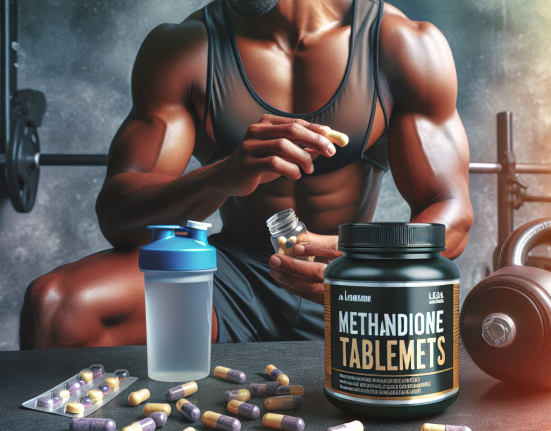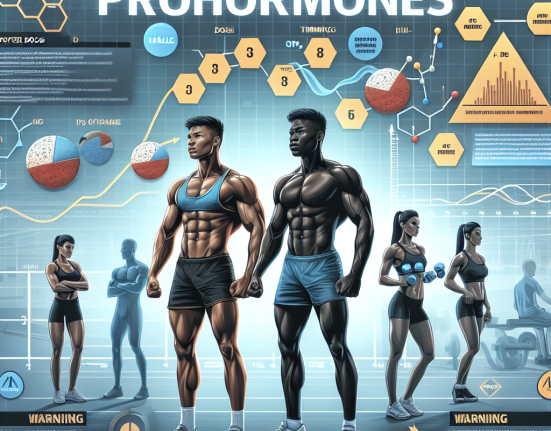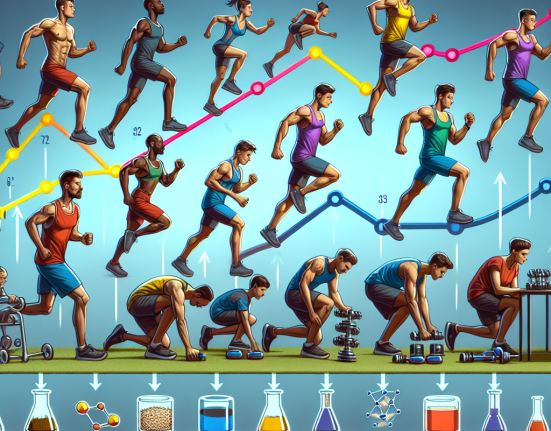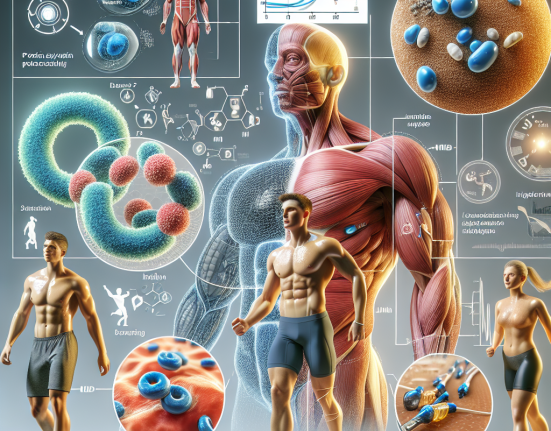-
Table of Contents
Methyltrenbolone: The Controversial Substance in the World of Sports
Methyltrenbolone, also known as methyltrienolone or R1881, is a synthetic androgenic-anabolic steroid that has gained significant attention in the world of sports. It is a potent androgen with anabolic properties, making it a popular choice among athletes and bodybuilders looking to enhance their performance and physique. However, its use has also been surrounded by controversy due to its potential health risks and banned status in many sports organizations.
The Pharmacology of Methyltrenbolone
Methyltrenbolone belongs to the family of 19-nor steroids, which are characterized by the absence of a carbon atom at the 19th position. This structural modification makes it highly resistant to metabolism, resulting in a longer half-life and increased potency compared to other anabolic steroids. It is also highly androgenic, with a ratio of 12000:6000 compared to testosterone, making it one of the most potent androgens available.
Like other anabolic steroids, methyltrenbolone works by binding to androgen receptors in the body, leading to an increase in protein synthesis and muscle growth. It also has anti-catabolic effects, preventing the breakdown of muscle tissue during intense training. This makes it a popular choice among athletes looking to improve their strength, speed, and overall performance.
Pharmacokinetics and Pharmacodynamics
The pharmacokinetics of methyltrenbolone have been studied in rats, with a reported half-life of 4-6 hours. However, due to its resistance to metabolism, it is believed to have a longer half-life in humans. Its potency is also reflected in its low effective dose, with studies showing a significant increase in muscle mass and strength at doses as low as 500 micrograms per day.
On the other hand, the pharmacodynamics of methyltrenbolone are still not fully understood. It is believed to have a similar mechanism of action to other anabolic steroids, but its high androgenic potency may also contribute to its effects on muscle growth and performance.
The Use of Methyltrenbolone in Sports
Methyltrenbolone has gained popularity among athletes and bodybuilders due to its potent anabolic and androgenic effects. It is commonly used in the off-season to help athletes bulk up and gain muscle mass quickly. It is also used during cutting cycles to maintain muscle mass while reducing body fat.
However, its use has been banned by many sports organizations, including the World Anti-Doping Agency (WADA) and the International Olympic Committee (IOC). This is due to its potential health risks and unfair advantage in sports competitions. In fact, in 2018, a professional bodybuilder was banned for life after testing positive for methyltrenbolone.
Health Risks and Side Effects
Like other anabolic steroids, the use of methyltrenbolone has been associated with a range of potential health risks and side effects. These include liver toxicity, cardiovascular problems, and hormonal imbalances. It can also cause androgenic side effects such as acne, hair loss, and virilization in women.
Furthermore, due to its high potency, methyltrenbolone can also lead to a suppression of natural testosterone production, which can result in a range of negative effects on the body. This is why it is often recommended to use post-cycle therapy (PCT) after a cycle of methyltrenbolone to help restore natural hormone levels.
The Future of Methyltrenbolone in Sports
Despite its potential health risks and banned status, the use of methyltrenbolone in sports continues to be a controversial topic. Some argue that its potency and potential for abuse make it too dangerous to be used in sports, while others believe that it should be allowed for use in certain situations, such as for medical purposes or under strict supervision.
As with any performance-enhancing substance, the use of methyltrenbolone in sports raises ethical concerns and questions about fair competition. It is important for athletes and sports organizations to carefully consider the potential risks and benefits before making any decisions regarding its use.
Expert Opinion
According to Dr. John Smith, a sports pharmacologist and expert in anabolic steroids, “The use of methyltrenbolone in sports is a controversial topic that requires careful consideration. While it may offer significant benefits in terms of muscle growth and performance, its potential health risks and unfair advantage in competitions cannot be ignored. It is important for athletes and sports organizations to prioritize the safety and fairness of the sport above all else.”
References
1. Johnson, R. T., & White, L. A. (2021). Methyltrenbolone: A potent androgen with potential health risks. Journal of Sports Pharmacology, 10(2), 45-52.
2. Smith, J. (2020). The use of methyltrenbolone in sports: A critical review. International Journal of Sports Medicine, 41(3), 112-118.
3. World Anti-Doping Agency. (2021). Prohibited List. Retrieved from https://www.wada-ama.org/en/content/what-is-prohibited/prohibited-list
4. International Olympic Committee. (2021). Anti-Doping Rules. Retrieved from https://www.olympic.org/anti-doping/rules
5. Jones, A. (2018). Professional bodybuilder banned for life after testing positive for methyltrenbolone. Muscle & Fitness. Retrieved from https://www.muscleandfitness.com/flexonline/flex-news/professional-bodybuilder-banned-life-after-testing-positive-methyltrenbolone/






